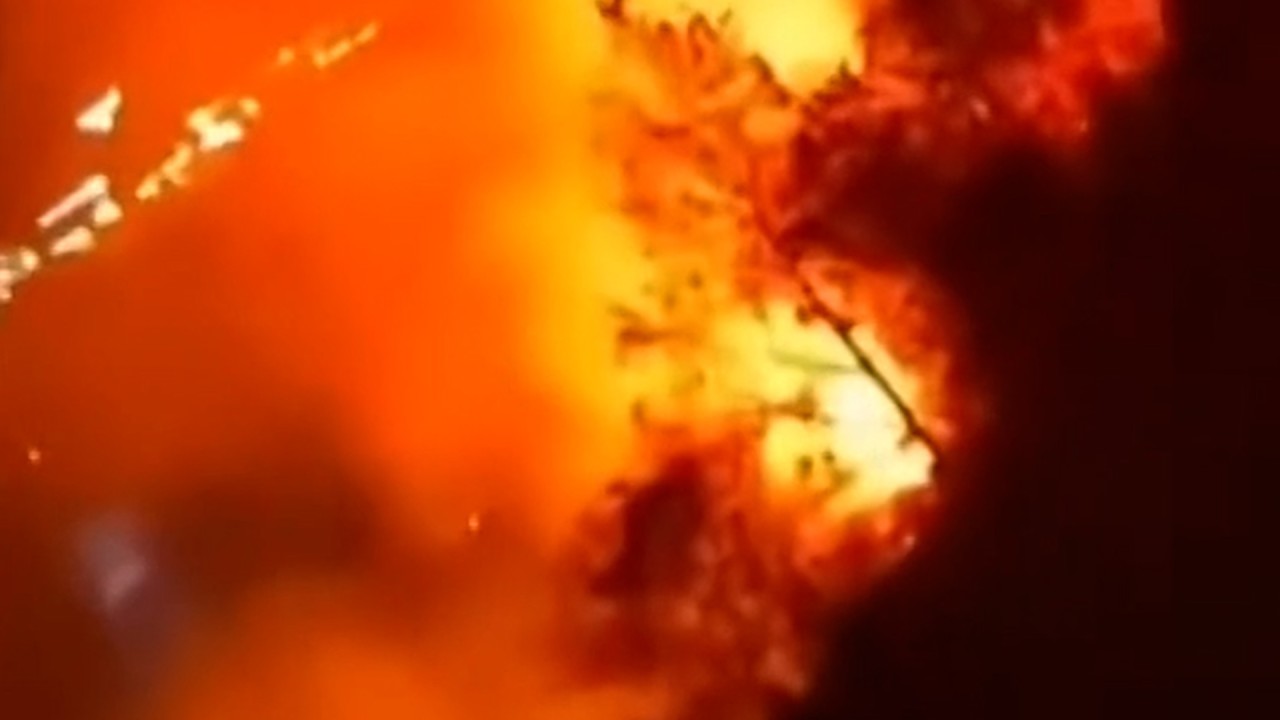
How wildfire smoke disrupts local weather – and fuels more extreme blazes
- Chinese and international researchers examine wildfires in North America and Southeast Asia for clues to relationship between blazes and the weather
- Academic sees need for real-time forecasts to spot sensitive areas and take preventive action, such as spraying water, before fire takes hold
When Ding Aijun was studying meteorology at Hong Kong Polytechnic University two decades ago, on chilly spring days he saw a blanket of smoke in the sky caused by forest fires burning in Southeast Asia.
It made him wonder how air pollution interacts with weather and climate to affect people’s health around the world.
Now, after leading a team from Nanjing University and international collaborators, Ding has revealed that wildfire smoke, once in the atmosphere, can quickly change the weather and cause fires to spread.
“Wildfires are often seen as a result of unfavourable weather conditions, such as strong winds and dry air. We were surprised to see they have a very strong ‘feedback’ effect on the weather which actually fuels their own growth,” said Ding, of Nanjing’s school of atmospheric sciences and lead author of the study.
“While extreme fire disasters have been widely studied on long-term climate scales, it’s important to understand how they work at a short-term, regional scale because it enhances our ability to actively manage them in the future,” he said.
Efforts to slow global warming may be too late for key glaciers, report warns
Previous research showed that fire flames could release tiny particles known as aerosols to form a dense layer in the atmosphere, absorb heat and reduce the amount of solar energy reaching the ground.
As the researchers used satellite data to look at fire-ridden hotspots across the world, they found extreme fires on the west coast of the US and in mainland Southeast Asia were typically related to local weather changes.
So they established a computer model, and input wind and emissions data to simulate the interplay of fire, smoke and weather.
“We did a good amount of calculation, since so many different kinds of pollutants and chemical reactions were involved,” Ding said.
As a result, the hot atmosphere and cool ground created unstable thermal conditions, which in turn generated stronger east-blowing winds and drier air to feed the growth of the fire.
This process caused regional air pollution to soar almost 80 per cent, their simulation showed.

As aerosols enveloped the region, the land cooled while the sea continued to heat up because of the warm atmosphere. The temperature gap eventually gave rise to a cyclone which curbed monsoon-season rainfall and helped the fires expand.
Ding said that while the two regions were dominated by very different climates, the study connected the dots and revealed a previously unknown mechanism in which smoke made the fires larger and more dangerous.
The study shows the importance of early fire suppression.
“Similar to weather forecasts, we can run near real-time forecasts to spot the so-called sensitive areas and take preventive measures, for instance water spraying, to interrupt the feedback loop before the fire and smoke get started properly,” he said.
Burning trees in the Amazon melt snow in the Himalayas
As extreme wildfires became increasingly common, coordinated and effective management of fire risks was vital, he warned.
“It’s critical that we make an effort to avert some extreme disasters, rather than just surrender our homes to the fires,” he added.



